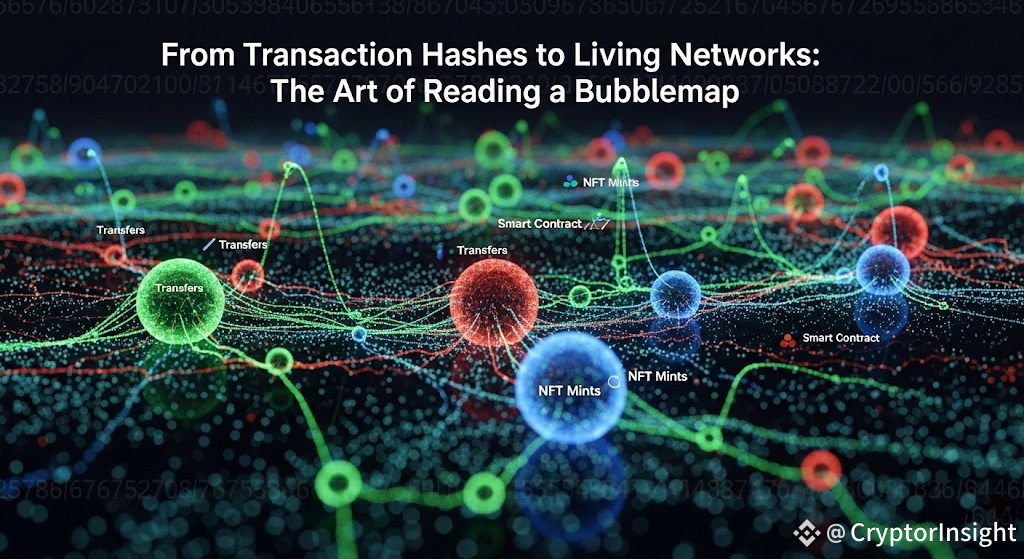The Illusion of Anonymity and the Chaos of Block Explorers $BMT 
One of the great myths of cryptocurrency is that of total anonymity. In reality, every transaction, every transfer, every token swap is permanently and publicly etched onto the blockchain ledger. While wallet addresses are pseudonymous strings of characters, the connections between them create a web of relationships that can be traced and analyzed. For years, the only tool for this was the block explorer. While essential, explorers present this data as a chaotic, impenetrable wall of text a chronological list of hashes and addresses that offers raw data but zero insight. It's like trying to understand a city's social dynamics by reading a phone book one entry at a time. This complexity has created an environment where hidden connections, wallet-splitting, and coordinated manipulation can thrive, simply because the story behind the data was too difficult for anyone to read.
From Transaction Hashes to Living Networks: The Art of Reading a Bubblemap $BMT

Bubblemaps transforms this chaos into clarity. It is a visual analytics tool that renders on chain data as a beautiful, intuitive, and interactive graph. Instead of lists of text, you see a living network. Each "bubble" on the map represents a wallet or a smart contract, with its size directly proportional to the amount of the token it holds. The lines connecting these bubbles represent the transactions between them. The true genius lies in the clustering algorithm. Bubblemaps automatically groups wallets that have a strong on chain connection, such as receiving funds from the same initial source. This instantly reveals clusters of wallets that are likely controlled by a single entity. Suddenly, you are no longer reading a phone book; you are looking at a dynamic map of influence, a visual representation of the power structures and capital flows within a token's ecosystem.
Case Study: Unmasking a Token's "Community" as a Single Whale $BMT 
Imagine a new token, "AstroCoin," launches and its creators boast of having "over 1,000 unique holders," suggesting a strong, decentralized community. A quick look at a block explorer might even confirm this number. However, pasting the AstroCoin contract address into Bubblemaps tells a drastically different story. A large bubble, the deployer wallet, sits at the center. From it, a dozen thick lines extend to a cluster of medium sized bubbles, which are all tightly grouped together. From this initial cluster, hundreds of thin lines then spray out to the tiny "community" wallets. The visual is undeniable: the founding team didn't distribute tokens to a thousand individuals. They sent large chunks to a dozen wallets they themselves control, and then dispersed tiny amounts from those wallets to create the illusion of decentralization. The "community" is a fiction, and the risk of a coordinated dump by a single entity is incredibly high. This is an insight that takes minutes to find on Bubblemaps, but could take days of manual analysis to uncover otherwise.
A New Era of Due Diligence: Making Transparency the Default in Web3
@Bubblemaps.io is more than just a tool for retail investors to "DYOR" (Do Your Own Research). It represents a new standard of radical transparency for the entire Web3 industry. Venture capital firms use it to conduct deep due diligence on potential investments, verifying token distributions and identifying hidden whale concentration. Exchanges use it to monitor for signs of market manipulation. The projects themselves use it to understand their own holder base and ensure their tokenomics are genuinely fair. By making complex on chain data accessible and understandable to everyone, Bubblemaps levels the playing field. It shifts the balance of power from those who can hide in complexity to those who can stand by transparency. It is an essential tool in the fight to make Web3 a safer, more trustworthy, and more mature ecosystem.

